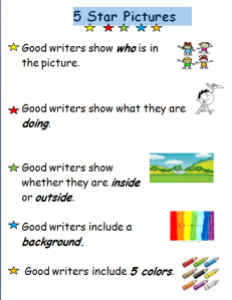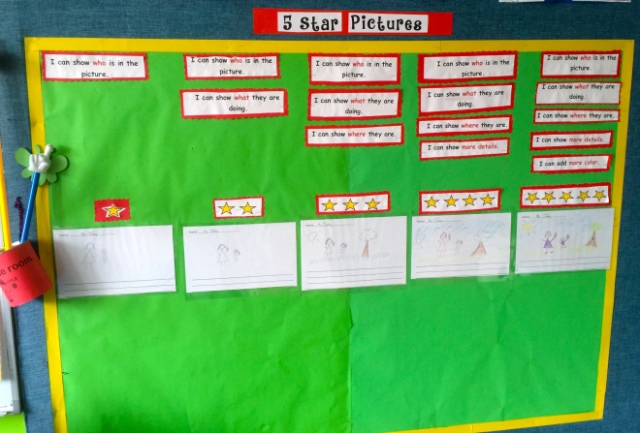I was recently asked what behavioral management strategies I use in my classroom which would be helpful for a new classroom teacher. Of course there are the typical things that most teachers use like sticker charts, behavior management boards, and student of the week or some other way to acknowledge positive behavior in class. But the things that I use which are the bread and butter of my classroom is song and consistently focusing on what I want.
I have a song for everything–for sitting on the carpet, for cleaning up, for writing, for lining up, for reading, for washing hands, for EVERYTHING! Really I do. Most early childhood teachers wouldn’t survive without a few songs or finger plays in their bag of tricks because it is the easiest way to get the group focused.
Examples of Songs For Transitions and Focusing Attention
And the second thing I do is to keep laser sharp focus on students doing the right thing. Even when it seems that the children are absolutely nutty, there is always one if not more that are doing what you want. Many teachers, especially new ones, are so keen to try to stop bad behavior that they can really miss out on the students who are doing what you want them to do. When you are “praizy” (praise-crazy), you have more kids who fall into line because EVERYONE–young and old– loves to be admired and appreciated. Here’s an example of what I sound like during whole group instruction:
“Wow, look at Basmala! Do you see how she is sitting on her bottom with her legs criss-crossed? She is looking at me, eyes focused and ready to learn. Look, she even has a smile on her face. Oh, my beautiful friend, Basmala, thank you so much for being ready to learn. Who else is ready to learn like Basmala?….Ah yes, Sema is ready now. Thank you, Sema! Oh and look at Shayma. Thank you, Shayma. Oh great, Ahmed is ready now. Thank you Ahmed. ” This little round of genuine praise does wonders to get everyone on task, meanwhile my energy has remained positive and light. No frustration, no anger. I am smiling, the children are smiling. The group is focused now. You just have to practice on focusing on the good stuff that happens, remain calm, and be “praizy”.
Easy, right?
Oh wait, I hear you say–what about that one kid who won’t fall into line, who is still talking or walking around the room?
You have options: ignore him/her if they are not are not being loud or disruptive; continue teaching but go over and quietly lead them to a chair or area that is outside the group but still giving a chance to participate; or give them “THE LOOK”. Every teacher must have this skill. Most teachers consider it a look of death, a stern ugly stare that puts the fear into a child, signaling that you mean serious business. However, for myself, this look has evolved into something more meaningful.
I believe that most students who are the “trouble makers” in class just really need attention, and negative attention is still attention. True?-yes! So, my look is no longer the kind in which fire shoots out of my eyes, but more of a piercing stare that I aim at their heart. It’s a stare which means “I SEE WHO YOU REALLY ARE!” –a genius, a poet, an athlete, an artist, a comedian, etc… In my mind, I repeat to myself “I love who you really are. I love who you really are. I love who you really are.” And within seconds, when my look penetrates them, they begin to feel safe & accepted, and like magic they fall into line and I give them a silent smile. So much better than yelling or giving a lecture or putting them in time out or calling their parent, or what ever typical negative response they could get from you!! And the best part is that you don’t lose the focus of the group.
I recognize that as an early childhood teacher I help form a child’s first understanding of themselves as a learner, and I play a pivotal role in building their confidence and self-esteem. So I work hard to remain open and compassionate to all the silly and upsetting behavior that a child may engage in. Therefore, the most important thing, I think, is to keep students aware and focused on how wonderful they are becoming, and to let them know that I accept them no matter what.
I hope this brief sharing has benefited you. May your classrooms be full of peace. -Judy
Share and Grow with those you know.
Like this:
Like Loading...







